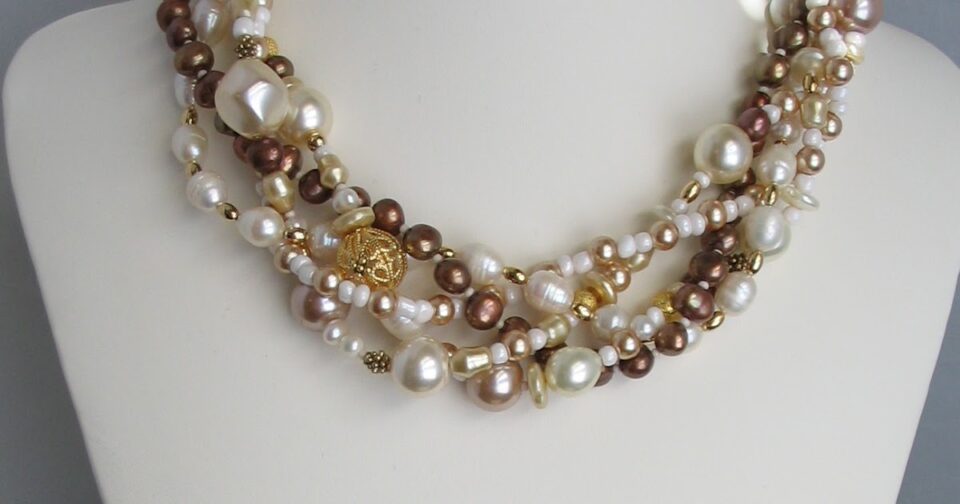Introduction to Pink Pearls
Pink pearls, with their soft, delicate hue, have long been cherished as symbols of elegance, femininity, and sophistication. These gems, often referred to as the “classic ones” in the world of pearls, possess a unique charm that sets them apart from other varieties. Their subtle blush tones make them an ideal choice for those seeking a combination of understated beauty and timeless appeal.
The Origin of Pink Pearls
Natural Formation
Pink pearls are primarily formed within the Akoya oyster and certain species of freshwater mussels. These pearls are cultivated in the cool, tranquil waters of Japan, China, and Tahiti, where the perfect balance of minerals in the water contributes to their stunning color and luster. The formation process of pink pearls can take several years, during which the mollusk coats an irritant with layers of nacre, gradually developing the pearl’s characteristic pink hue.
The Role of Nacre
The beauty of pink pearls lies in the quality of their nacre. Nacre, also known as mother-of-pearl, is a smooth, iridescent substance that gives pearls their luster. The thickness and quality of the nacre directly influence the pearl’s shine and durability. High-quality pink pearls are those with thick, even layers of nacre, resulting in a deep, radiant glow.
Types of Pink Pearls
Akoya Pink Pearls
Akoya pink pearls are among the most sought-after varieties. Known for their perfect round shape and high luster, these pearls are typically smaller than other types, ranging from 6 to 8 millimeters in diameter. Their soft pink tones, often with overtones of rose or silver, make them a favorite for classic jewelry pieces.
Freshwater Pink Pearls
Freshwater pink pearls, cultivated primarily in China, are known for their wide range of sizes and shapes. Unlike Akoya pearls, freshwater pearls are often baroque or irregular in shape, adding a unique character to each pearl. These pearls are also more affordable, making them accessible to a broader audience while still offering the same delicate pink hues.
South Sea Pink Pearls
South Sea pearls, though traditionally known for their white and golden varieties, also produce stunning pink pearls. These pearls are among the largest and most luxurious, with sizes ranging from 10 to 15 millimeters. The soft, satin-like luster of South Sea pink pearls, combined with their size, makes them an opulent choice for statement jewelry.
Symbolism and Cultural Significance
A Symbol of Love and Romance
Throughout history, pink pearls have been associated with love, romance, and femininity. Their soft, blushing color is reminiscent of a lover’s flush, making them a popular choice for bridal jewelry and romantic gifts. In various cultures, pink pearls are believed to bring good fortune in love and relationships, symbolizing purity, innocence, and the nurturing aspects of femininity.
The Timeless Appeal of Pink Pearls in Fashion
Pink pearls have maintained their relevance in fashion over the centuries. From the royal courts of Europe to modern-day red carpets, pink pearls have adorned the necks, ears, and wrists of some of the world’s most stylish and influential women. Their versatility allows them to complement both traditional and contemporary styles, making them a staple in every jewelry collection.
Caring for Pink Pearls
Proper Storage
To maintain the beauty of pink pearls, it is essential to store them properly. Pearls should be kept in a soft, padded jewelry box, away from other gemstones that could scratch their surface. It is also recommended to store pearls in a slightly humid environment to prevent them from drying out and losing their luster.
Cleaning and Maintenance
Pink pearls should be cleaned with a soft, damp cloth after each wear to remove any oils or residues. Avoid using harsh chemicals or ultrasonic cleaners, as these can damage the nacre. Regular professional cleaning and restringing every few years will ensure that your pink pearl jewelry remains in pristine condition.
Choosing the Perfect Pink Pearls
Factors to Consider
When selecting pink pearls, there are several factors to consider, including luster, surface quality, shape, size, and color. High-quality pink pearls will have a bright, reflective luster, minimal surface blemishes, and a symmetrical shape. The color should be uniform with a desirable overtone, such as rose or silver.
Matching Pink Pearls with Jewelry
Pink pearls can be beautifully paired with various metals and gemstones to create stunning jewelry pieces. White gold and platinum are popular choices for setting pink pearls, as they enhance the cool tones of the pearls. For a more vintage look, pink pearls can be paired with rose gold, which complements their blush color. Additionally, pink pearls can be accented with diamonds, sapphires, or other gemstones to add a touch of luxury.
Conclusion: The Enduring Allure of Pink Pearls
Pink pearls are more than just beautiful gemstones; they are a testament to nature’s artistry and the timeless elegance of classic jewelry. Whether worn as a simple strand or set in an elaborate design, pink pearls continue to captivate and inspire. Their soft, romantic color, combined with their rich cultural significance, ensures that pink pearls will remain a cherished choice for generations to come.

